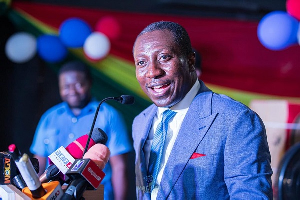Kenyan lawmakers are close to agreeing on legislation that will halt excessive government borrowing and do due diligence on debt-funded projects.
Some projects have become cashcows for unscrupulous state officers, and there are concerns about the economic viability of the Ksh162 billion ($1.48 billion) Nairobi-Naivasha section of the standard gauge railway line whose repayment is due later this month.
The Public Debt Management Authority Bill (2020) seeks to establish an independent state agency to review the purposes for all borrowing proposals floated by the National Treasury and advise the National Assembly on the feasibility of the loans.
The Private Members Bill introduced in Parliament by Nambale MP John Bunyasi also provides that due diligence be carried out on the government’s debt funded projects in terms of their actual costs and economic returns, to avert further loss of taxpayers’ funds through inflated costs by corrupt state officers.
Curbing waste
“We are spending more on our projects than we should. That waste includes poor assessment of costs and willingful over statement of costs. This Bill helps by trying to ask questions in terms of the costs and viability of these projects,” Mr Bunyasi told The EastAfrican in an interview last week.
The Bill, which is currently undergoing public participation, will be tabled before the House Committee on Finance and Planning next month after the lawmakers resume sittings.
Meanwhile, Treasury is considering increase the debt ceiling to Ksh12 trillion ($110 billion) from Ksh9 trillion ($82 billion) to fund government operations amid declining tax revenue collections, a widening budgetary deficit and ballooning expenditure needs.
Kenya’s total debt as at September 30, 2020 was Ksh7.12 trillion ($65 billion) after the National Treasury borrowed a total of Ksh1.11 trillion ($10.1 billion) for the nine months to September 30, 2020. It comprised Ksh596.6 billion ($5.44 billion) in external debt and Ksh514 billion ($4.69 billion) in domestic debt.
The government’s cumulative revenue collection, including Appropriation-in-Aid (A-I-A) for the three months to September 30, 2020, fell below target by Ksh50.2 billion ($458 million) with the Kenya Revenue Authority collecting Ksh378.7 billion ($3.46 billion) against a target of Ksh428.9 billion ($3.92 billion), according to data from the Treasury.
This was largely due to the underperformance in Pay As You Earn (PAYE), VAT (both domestic and imports), excise duty, import duty and the ministerial A-I-A.
The EastAfrican has learnt that the Public Debt Management Authority (PDMA), to be chaired by a presidential appointee, will also take over the central bank function of issuing government public debt securities (Treasury bills and bonds ) on behalf of the national and county governments.
Treasury pays Central Bank of Kenya 1.5 per cent, or up to Ksh3 billion ($27 million) in fees for each debt raised from the domestic market through Treasury bills and bonds.
However, under the new authority this function will be discharged at a lower rate.
“The agency function of issuing Treasury bills and bonds by the Central Bank will now go to the debt management authority. The estimate that has been given to us in parliament by both our budget office as well as the Treasury is that it will cost the debt management authority close to Ksh1.5 billion($14 million) per year to issue government securities on behalf of the government,” said Mr Bunyasi.
According to the Bill, the PDMA will also be in-charge of implementing the government’s public debt management policy of minimising its financing costs over the long term, taking account of risk, and formulating policies, strategies and procedures to be employed by the Authority in achieving its objectives.
Impact of debt
PDMA will also be tasked with reviewing the economic and social impact of domestic and external debt management strategies, and facilitating debt rescheduling and restructuring to comply with the government’s public debt management policy.
It will also maintain a register of all loans advanced to the national government, county governments and their entities, including loans guaranteed by the national government.
“This Bill intends to rationalise the process by which debt is acquired, how it is reported and approved along the chain with oversight agencies, and how it is recorded. Recording is very important because today if you asked different people — whether it is Treasury, parts of Treasury and other government agencies — how much the debt is, they will give you different figures. Correct recording of public debt is important in understanding what the contract says has been borrowed, when it is due, at what terms and for how long,” said Mr Bunyasi.
“This Bill is also of interest to the Executive and to the Presidency in understanding better how money that is borrowed is actually flowing.”
Africa Business News of Thursday, 14 January 2021
Source: theeastafrican.co.ke

















